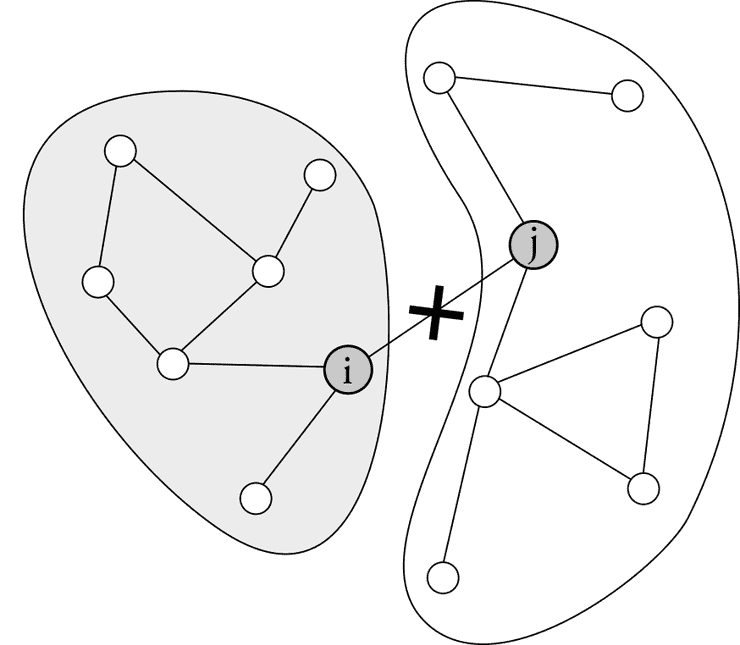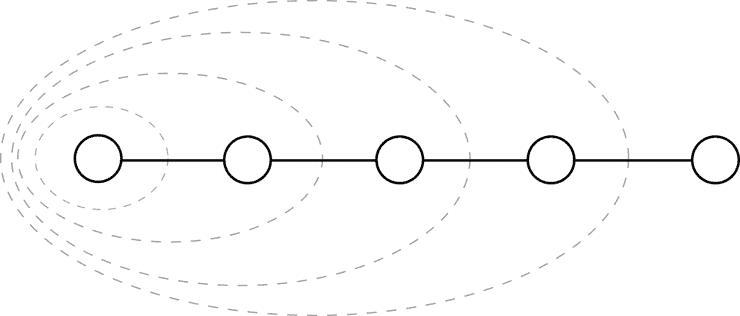Cover Time of the Cycle Graph
1. Cover Time of the Line Graph
Computing the cover time of the line graph is straightforward using Moon’s lemma.
(Moon’s Lemma, 1973) Given a graph for which is a cut edge, we have:
where is the graph containing when the edge is removed. In particular, if is a tree, then:
Proof. Traversing the edge takes one time step. How many times do we need to come back to before crossing this bridge? Well, this number of times is geometrically distributed and we have:
where is the degree of the node . Now the expected time spent walking in is just if by we have in mind a random walk happening on . If we note the stationnary distribution where is the number of nodes in , we have (by the property of mean recurrence times) that:
since the degree of the node is one less in . Since is geometric, we also now that , which yields the proof.
A line graph is of course a tree and we can apply the second equation successively as we move from the left-most vertex to the right-most vertex.
We therefore get a sum of successive odd integers as grows from being the left-most vertex to being the entire line graph:
2. Hitting Time of the Cycle Graph


